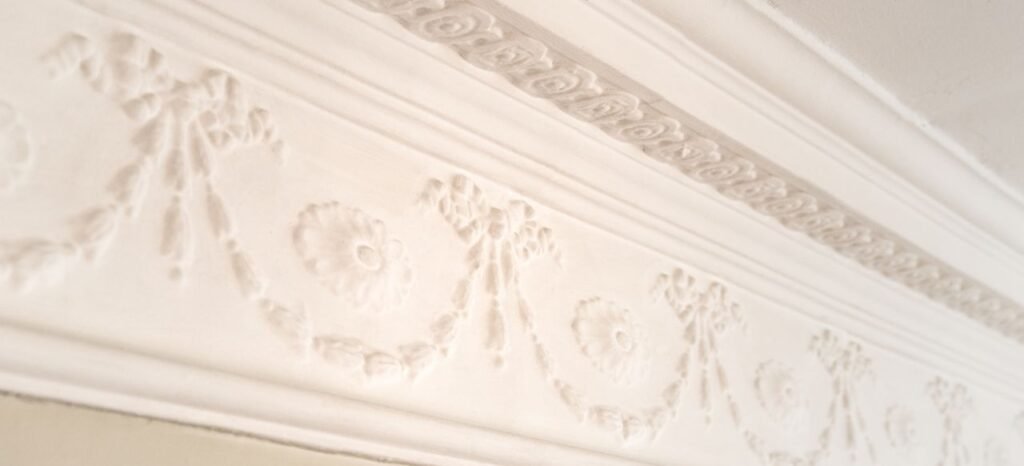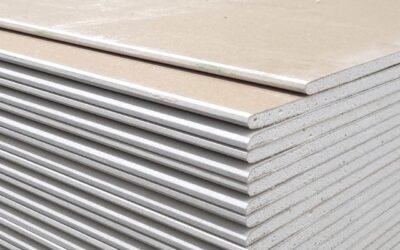Sydney has a stunning selection of older, heritage homes, scattered throughout the city from North to South, East and West. As a plasterer, Paul gets to work with these opulent homes, renovating or repairing the plaster, which is often as ornate as you can image. From ornate decorative ceilings to cornices to archways, you may be curious about these ornate features that date a home to a period where craftsmanship and finer details were what set your home apart.
If you have one of these older homes, preservation is essential to keeping the aesthetic value these features provide. You’ll need a quality plasterer with experience in these features who can perform preservation and repair as needed.
We’ll explore the types and eras of plaster styles across Australia in this article. We’ll also cover why it’s so important to find a skilled and experienced plasterer to maintain your ornate decorative ceilings and cornices. Read on for all the important details.

The various types of ornamental plaster
One of the best places to start with an exploration of ornamental plaster is by explaining what the various options are. If you’re unfamiliar with these features, this is important if you’re planning on a renovation or need restoration services.
Archways are commonly used to break up long hallways with decorative elements. They can also connect two rooms without the need for a door or hide structural supports that take away from the overall aesthetic. Keystone arches are the most common types used and are a reminder of older architectural styles.
Cornices are often referred to as crown moulding and feature repeating patterns. They can be found throughout a building, including above doorways and windows. Many common varieties are used, such as dentil, stepped and bevelled. Ornate designs are not out of the question, with many architectural styles incorporating birds, flowers and geometric shapes, especially in heritage style homes.
Skirting is the baseboard moulding in a room where the wall and floor meet. It’s typically very plain with minimal features. It may be bevelled, but you’ll likely not find anything ornate, unless in very opulent homes.
Some homes also feature fireplace surrounds. This decorative plastering increases the visual appeal of the fireplace, effectively framing it. You may see faux columns or pilasters on either side of the fireplace. Other design options include a frieze above the mantel, reliefs on both sides of the fixture and moulding that butts up against the mantel.
Different eras of plastering
Heritage plastering gives insight into the era and trends of the time that the home was built. Some properties have immaculate decorative plaster that tells a significant historical story and reveals the methods used when the property was built.
Colonial period in Australia began with the British settlement in 1788 and the style of ‘colonial architecture’ was the prevalent style from 1788 to 1850. It was marked for its simplicity, symmetry and often had rectangular shapes incorporated into the build itself and aesthetic features.
Following this period was the Victorian style, which overlaps with some of the colonial period. The victorian architecture can be grouped into 3 different periods: early (circa 1804-1860); mid (1861 to 1875); and late (1876 to 1901). Early Victorian homes had that worker’s cottage vibe, simple brick homes with a front verandah, and minimal frills.
The Mid Victorian period is when ornate detailing began to be all the rage. Characterised by cast iron lacework, ornamental brick facades, embellished ceilings and mouldings.
Last Victorian homes such as terraces that you can find in Sydney will have the same cast iron lacework, fireplaces with ornate moulded timber work or plasterwork, decorative ceilings, balustrades, staircases and windows.
The Federation-style homes came next, with their red brick exterior, stained glass, bay windows, and ceilings were ornately decorated with features such as flowers and cornices were no less ornate, featuring medallions and flowers.
Art Deco followed the Federation style, running from 1930 to 1950. You can easily recognize this style of architecture by the geometric shapes in the ornate decorative ceilings and cornices. These included diamonds, trapezoids, lines, chevron patterns, and sunburst motifs.
Finally, we have the Modern style, which began in 1950 and continues today. Modern architecture can be considered simpler in design, as it sometimes doesn’t feature any patterns. Instead, its main draw is clear, bold lines and linear elements.
Different techniques of plastering
Some styles of ornate or decorative plaster require skill to repair or restore, and cannot be properly restored by someone without the experience and patience required. In order to preserve the plastered features, it’s best to invest in hiring a skilled plasterer with a track record of being able to achieve a high result for heritage style homes.

Why you need a skilled plasterer to handle restorations
When you hire an experienced plasterer for any job involving plaster repair, you’ll get a seamless finish that essentially erases the damage from existence. They know how to blend the newly repaired plaster with the old so that you cannot tell anything was ever wrong.
With ornately detailed plaster, it takes a special hand to replicate the original work. No average handyperson will have the talent needed to deliver a quality restoration. You’ll be left with a sloppy result that looks like it was slapped together hastily. In fact, it could look worse than the damage itself.
Instead, seek out a skilled and experienced plasterer who can help preserve your piece of history. Get stunning results that are built to last and make your home look amazing.
Preserve your ornate ceilings and cornices with an expert plasterer

Don’t leave things up to chance when it comes to preserving your decorative plaster. When you have damaged ceilings or cornices, you need a professional with the experience to blend the old and new plaster seamlessly for a flawless finish. Don’t settle for less when you can have a stunning restoration completed by a professional with experience.




